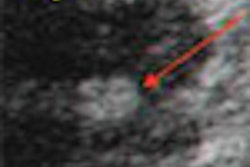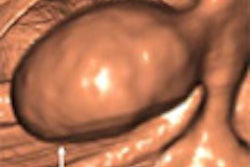For the first time in the 25 years since it began compiling such lists, the U.S. Department of Health and Human Services (HHS) has identified x-radiation and gamma radiation as "known to be human carcinogens" in a new report.
The American College of Radiology (ACR) immediately criticized Monday's listing, arguing that it is "misleading" and could negatively affect patient care.
"This report could lead patients to mistakenly believe that they are being placed at undue risk by undergoing a radiological procedure and cause many, who may desperately need care, to avoid seeking appropriate medical attention," ACR Chairman Dr. James Borgstede was quoted in a press release by the college.
But the ACR also used the new carcinogen listing as an opportunity to reinforce its call for designated physician imagers, "ensuring that only qualified providers administer and interpret radiological procedures in certified, accredited facilities."
"Radiologists, medical physicists, radiation oncologists, and nuclear medicine physicians are expertly trained professionals who have worked in coordination to produce strict guidelines and standards for the administration and interpretation of radiological procedures," Borgstede said.
"When these guidelines and standards are followed by appropriately trained and certified physicians, there is no undue risk to the patient," he stated.
X-radiation and gamma radiation are just two of several hundred known or suspected carcinogens listed in the "Eleventh Report on Carcinogens," the latest version of a report that federal health officials have been issuing biannually for more than two decades.
"Epidemiological studies of radiation exposure provide a consistent body of evidence for the carcinogenicity of x-radiation and gamma radiation in humans," the report states. "Exposure to x-radiation and gamma radiation is most strongly associated with leukemia and cancer of the thyroid, breast, and lung; associations have been reported at absorbed doses of less than 0.2 Gy."
Why the government opted to add x-rays and gamma rays to the list at this point is unclear from the report. However, several studies published as recently as 2002 are cited as part of the evidence for the listing.
The ACR learned about the pending change from a draft report, but was not consulted on it by HHS, according Richard Morin, Ph.D., chairman of the ACR Commission on Medical Physics and a medical physicist at the Mayo Clinic in Jacksonville, FL.
The report states that medical procedures account for 15% of the general population's exposure to all types of ionizing radiation. Of the estimated exposure to just x-radiation and gamma radiation, about 55% is from medical diagnosis and treatment.
By Tracie L. Thompson
AuntMinnie.com staff writer
February 1, 2005
Related Reading
Cardiology groups issue competence standards for fluoroscopic procedures, December 10, 2004
Medical radiation workers see reduction in cancer risk, September 21, 2004
Full-body screening elevates cancer mortality risk, August 31, 2004
Some radiologic technologists at increased risk for melanoma, March 4, 2004
Some cancers may be due to diagnostic X-rays, January 30, 2004
Copyright © 2005 AuntMinnie.com




















